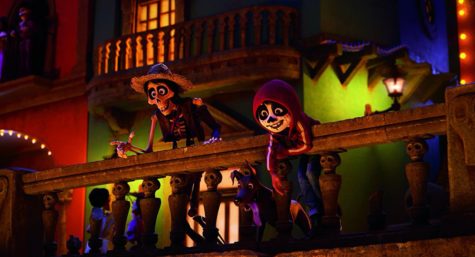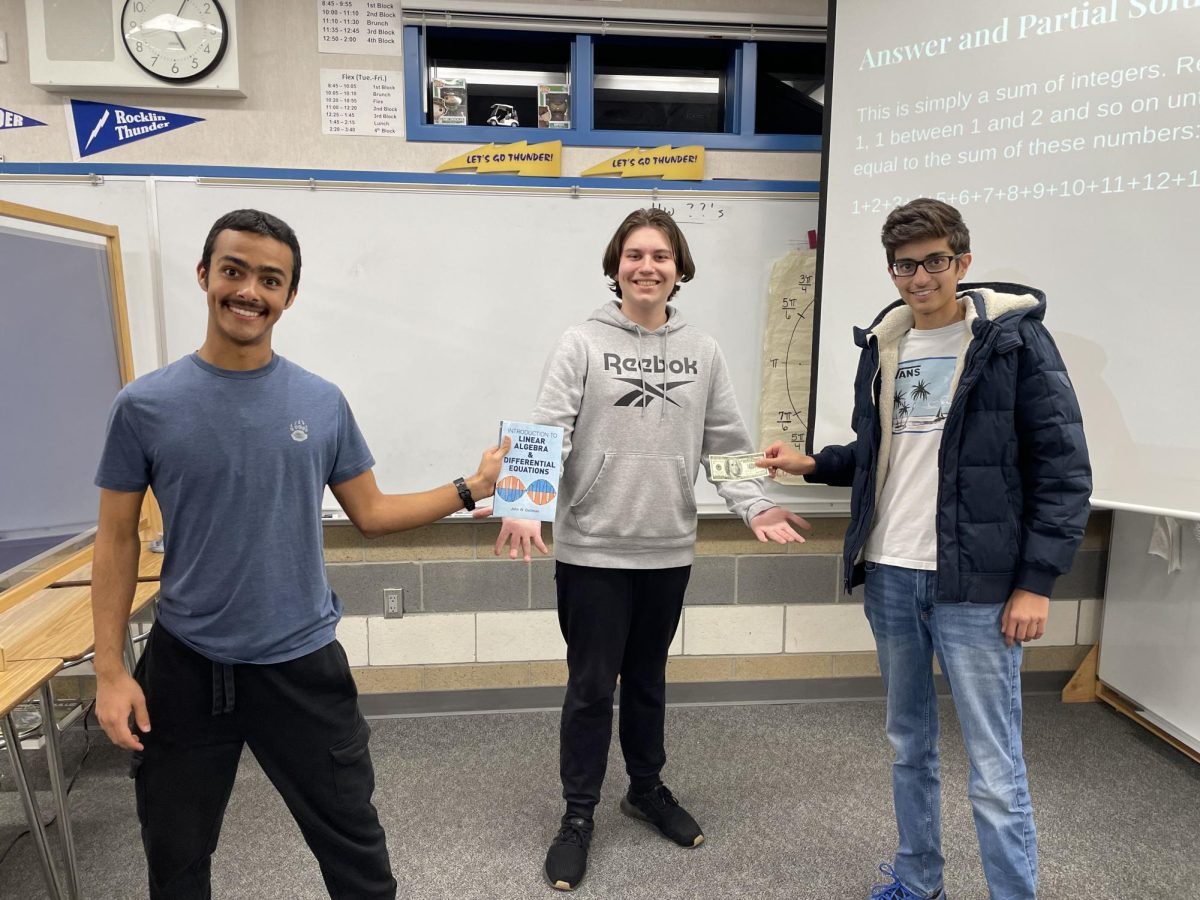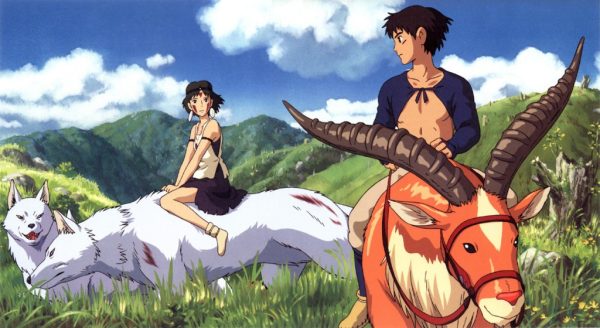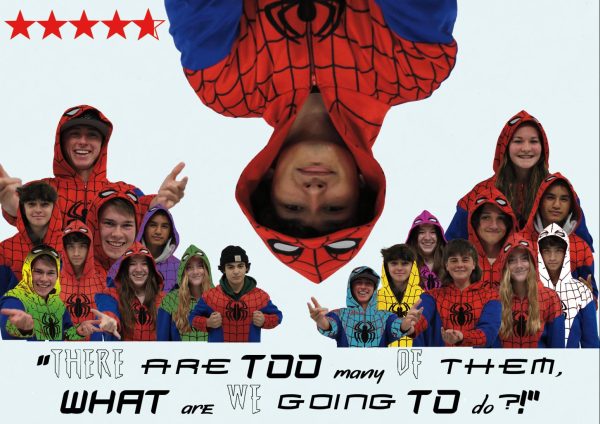A movie that asks to be remembered
Disney-Pixar’s “Coco” continues to sell out in theaters months after its release
January 24, 2018
In Director Lee Unkrich’s “Coco,” twelve-year-old Miguel Rivera, voiced by Anthony Gonzalez, knows that he wants to be a musician. He pesters a Mariachi singer for advice, plays guitar in his secret hideout and uses an old VHS television to watch videos of his idol, the great Ernesto de la Cruz, who was based on real-life Mexican celebrities Pedro Infante and Jorge Negrete.
His family’s relationship with music presents one problem: music is banned in Miguel’s household.
“Coco,” which was released in Mexico the weekend before Día de los Muertos, and in the U.S. a month later, is still selling out theaters in the Rocklin area.
Miguel lives in a fictional Mexican town called Santa Cecelia that is filled with music, but family history– specifically, his great-great-grandfather’s desertion of his family in order to pursue music– has fueled a multi-generational vendetta, enforced by Miguel’s strict but loving abuelita.
Nevertheless, Miguel seizes his moment, and scrambles to enter into a music contest.

Miguel’s tenacity throughout the movie is admirable, even as he disobeys his family in an emotional outburst on the day of Día de los Muertos. But his
fearless determination backfires when that determination, and a stolen guitar, inadvertently land him in the Land of the Dead.
Miguel’s journey to pursue music quickly becomes a life-or-death, or maybe more accurately, a life-or-afterlife, situation as he seeks a blessing to return to the Land of the Living and pursue music. Miguel meets his departed family members, whom he previously knew only from pictures, and they embrace him with open, albeit skeleton, arms.
“Coco” explores the spiritual significance of Día de los Muertos in a unique and beautiful way. Miguel experiences love that cannot be separated by death, and learns the importance of remembering his ancestors. The idea of being forgotten as a “second death” is a poignant part of the movie. Love is what ties the two worlds together, besides the more physical but beautiful marigold petal bridge.
The entire movie is both visually appealing and a distinctive feat of story-telling. Though a non-musical, the characters are musicians and sing beautiful and emotional songs like “La Llorona,” “Un Poco Loco” and “Remember Me.” During most of the movie, Miguel runs not from a villain, but from family members who want to protect him. The plot takes place over the course of one night, but rather than exhaust the viewer as lack of variation sometimes does, the time span creates an urgency to see Miguel home before sunrise.
This urgency, compounded by Miguel’s skeleton fingertips and by some of the ancestors’ fading vitality, keeps the audience engaged throughout plot twists and turns. And this stress is broken up by both jokes that have children giggling in the theater, and by heartwarming, feel-good moments that have the more sensitive viewer frantically brushing away happy tears before the credits roll.
Most importantly, “Coco” does a spectacular job of respecting and celebrating Mexican culture. With research trips, casting decisions, and invitations for feedback from Latinx communities, the creators of “Coco” sought to authentically and respectfully capture the traditions of the Day of the Dead, and the final product shows their efforts.
Because of how rare it is to see a movie offering positive representation of Mexican culture, “Coco” has been received with deep appreciation by viewers.
“I like that it exists in the first place,” said RHS junior Judith Blanco. “I like how well they represent the Mexican culture as what it is. Most movies just kind of have Mexicans as like poor cranky farm workers, if at all. I feel like they did a good job of showing how lively the culture is; also it’s funny and [has] a good plot.”
The plot is well-developed from beginning to end, and the ending reflects the movie’s family themes.
The solution to Miguel’s problem ends up not coming about in the way he expects, but instead through an increased understanding between himself and his family members. “Coco” as a whole embodies this message, as it promotes understanding between generations and between cultures.

















